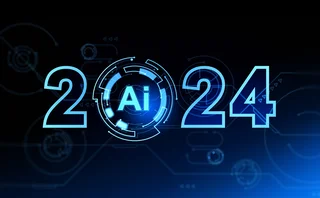
To Take Advantage of AI, a Multi-Faceted Approach is Necessary
Firms looking to capitalize on new cognitive technologies will have to learn how to combine AI, machine learning, RPA, NLP and various other tools to fully take advantage of this revolution.
Scroll through the news and analysis stories on WatersTechnology—or on any other tech-focused media outlet, for that matter—and you’ll be bombarded with headlines about artificial intelligence (AI), machine learning (ML), robotic process automation (RPA), natural language processing (NLP) and cognitive computing, which doesn’t really have an acronym yet, but give it time and we’ll figure out something better than “CC”.
Each of these instruments and their derivatives can be discussed in a silo, but while each has its own specific use case, it’s perhaps more sensible to think of them in concert—a choir, if you will, rather than a capella.
A recently published report by consultancy McKinsey & Company, titled “Cognitive Technologies in the Capital Markets”, examines this transition, finding that these tools will create 20 to 30 percent in additional capacity to focus on higher-value activities, thanks to enhanced speed, accuracy, and efficiency.
“These individual technologies taken in isolation obviously have benefits, but the combination of [these tools] have had superior results,” says Jared Moon, a partner at McKinsey. “When firms think about automation at scale or applying technologies at scale, they’ll need a portfolio of these technologies.”
In a recent conversation with WatersTechnology, Michael McGovern, who heads up Brown Brothers Harriman’s global fintech operations, with a focus on incorporating new technologies, says that cognitive technologies, when used in unison, will yield the highest returns. But it’s also important to remember that while there’s a lot of hype regarding cognitive technologies, it’s still very early days from an implementation standpoint in the capital markets.
“Some of these capabilities are still emerging and some we have seen on trading floors for many years, but they’re making their way into more general business use. I think of them as tools in a toolbox,” he says. “We need to think smarter and in a deeper way about which use cases would be relevant, but there’s no panacea here. Cognitive [tech] is still the anamorphic principle as a marketing strategy, more than anything else.”
Come Together
In its report, McKinsey compared eight banks and found that “those with the highest levels of digital execution saw front-office revenues per product increase by as much as eight times, while those with the highest level of post-trade digitization posted four times more trades per middle- and back-office [full-time employee] than the bank with the weakest digital resources.”
The report goes on to predict that cognitive technologies can generate additional capacity in the middle office of 25 percent while operations functions can be improved upon with capacity gains of about 33 percent.
“RPA and machine learning have high utility for the correction of standard instructions in the settlement and payments function,” notes the report. “Meanwhile, cognitive agents, smart workflows and [NLP] are most useful in client services, for example, for creating customized email responses.”
The breadth of areas that could be affected is breathtaking. By combining RPA, ML, NLP, cognitive agents and smart workflows, McKinsey says that there is high potential for impact in trade enrichment and allocation, product control, confirmations, settlements/payments, reconciliations, and client services; with moderate impact for T+0 activities like profit and loss, and risk checks, reporting and analysis, collateral and valuations, reference data management, and custodian and asset services. The only area where the consultancy found limited impact was for operations risk and control.
“We think that the change in the nature of the work and a higher-quality set of interactions and conversations are what will be transformative and where the value will be,” Moon says.
Not the Beginning of the End
McKinsey Global Research estimates that, out of 60 percent of all occupations in the capital markets, at least 30 percent of activities can be automated. In several media outlets, this estimate was mischaracterized to mean that machines could take over 30 percent of bank jobs, but this is a logical fallacy. Automating 30 percent of activities—generally low end, repetitive or administrative functions and not, necessarily, high-skilled jobs—will allow people in the middle and back office to focus on more important functions.
In fact, the report even states that the impact of technology does not necessarily “correlate directly with headcount reductions.” Something like RPA, McKinsey notes, reduces an individual’s workload by 10 to 20 percent, but that frees them up “to focus on higher-value activities such as research, idea generation and client relationship management.”
Machines will take over many jobs, and have undeniably started to put people out of work in the United States, but there are new jobs created by this revolution that cognitive technologies will bring to the fold. Humans will have to learn new skills, but the dystopian world that’s been predicted by some is largely skewed to fit a narrative at best, and at worst, only looks at one side of a coin.
And while cognitive technologies are impressive, we’re still far from a world run by bots. This is a progression. Today—and for the foreseeable future—machines will simply serve to augment what a human can do. Some traditionally working-class jobs that don’t require specialist skill sets will be lost, and it will be up to local communities, politicians, and schools to understand this sea change—a scary proposition, to be sure. But for the capital markets, machines will serve as augmentation vectors, rather than replacements, at least for the near term.
Eventually, more processes will be over taken by machines, but, again, new jobs will be created. New skills will have to be learned, sure, but this evolution is far from an overnight scenario. It’s on the horizon, but dawn—or perhaps more appropriately, dusk—is still a long way away.
Further reading
Only users who have a paid subscription or are part of a corporate subscription are able to print or copy content.
To access these options, along with all other subscription benefits, please contact info@waterstechnology.com or view our subscription options here: http://subscriptions.waterstechnology.com/subscribe
You are currently unable to print this content. Please contact info@waterstechnology.com to find out more.
You are currently unable to copy this content. Please contact info@waterstechnology.com to find out more.
Copyright Infopro Digital Limited. All rights reserved.
As outlined in our terms and conditions, https://www.infopro-digital.com/terms-and-conditions/subscriptions/ (point 2.4), printing is limited to a single copy.
If you would like to purchase additional rights please email info@waterstechnology.com
Copyright Infopro Digital Limited. All rights reserved.
You may share this content using our article tools. As outlined in our terms and conditions, https://www.infopro-digital.com/terms-and-conditions/subscriptions/ (clause 2.4), an Authorised User may only make one copy of the materials for their own personal use. You must also comply with the restrictions in clause 2.5.
If you would like to purchase additional rights please email info@waterstechnology.com
More on Emerging Technologies
Agentic AI and big questions for the technologists
Waters Wrap: Much the same way that GenAI dominated tech discussions over the last two years, the road ahead will feature a lot of agentic AI talk—and CIOs and CTOs better be prepared.
Waters Wavelength Ep. 302: Connectifi’s Nick Kolba
Nick joins the show to give his views on trends in the interoperability space and the FDC3 standard.
AI co-pilot offers real-time portfolio rebalancing
WealthRyse’s platform melds graph theory, neural networks and quantum tech to help asset managers construct and rebalance portfolios more efficiently and at scale.
Waters Wavelength Ep. 301: SIX’s Javier Hernani
Javier Hernani, head of securities services at SIX, joins to discuss everything T+1.
Bloomberg debuts GenAI news summaries
The AI-generated summaries will allow financial professionals to consume more data, faster, officials say.
8 bank CTOs and CDOs sound off on artificial intelligence
Waters Wrap: Last year, WatersTechnology spoke with heads of technology and data from a range of tier-1 banks. Anthony pulls at one common thread from those interviews: AI.
Waters Wavelength Ep. 300: Reflecting on humble beginnings
It is our 300th episode! Tony and Shen reflect on how it all started.
An inside look: How AI powered innovation in the capital markets in 2024
From generative AI and machine learning to more classical forms of AI, banks, asset managers, exchanges, and vendors looked to large language models, co-pilots, and other tools to drive analytics.






